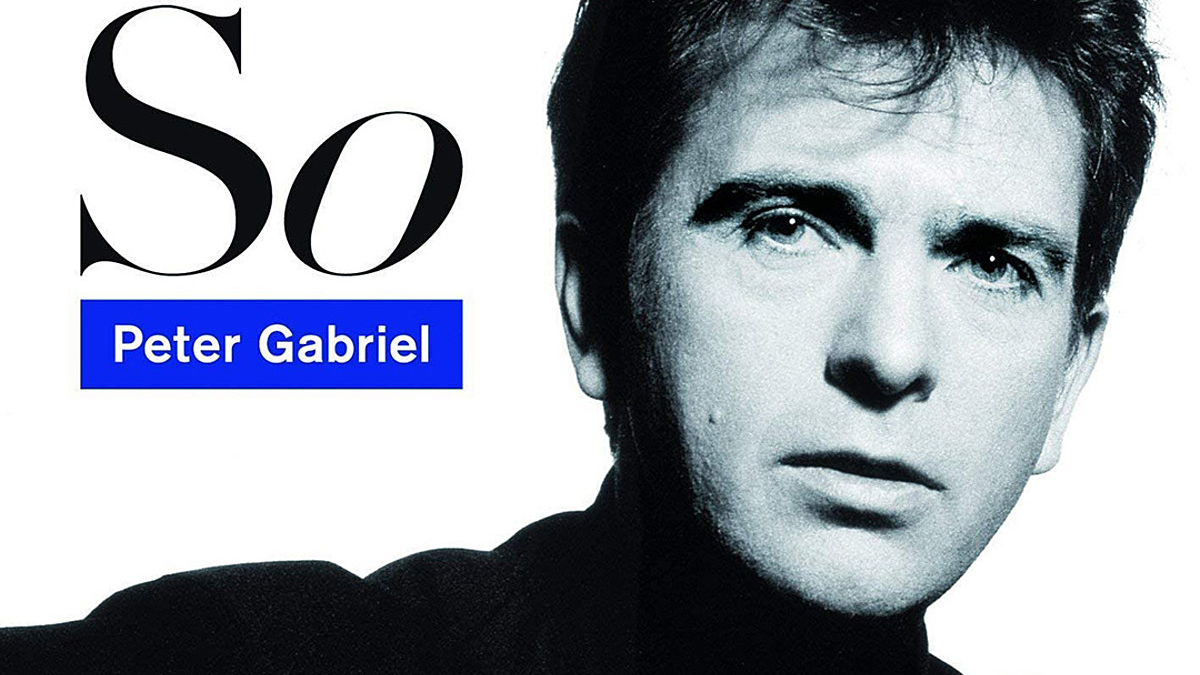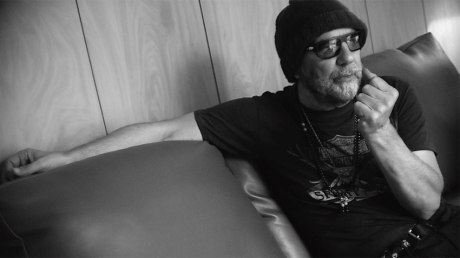Daniel Lanois talks producing and his memories of making So with Peter Gabriel: "If you don't get to a soulful place making a record, don't put it out"

"We only try and do what Quincy Jones recommends, every music has its soul," says Daniel Lanois. "Beyond the style of it, every music has its soul. As a record maker you have a responsibility to get to the soul of that music. And as a record listener you have a responsibility to listen to the records that have soul. It's that simple. And if you don't get to a soulful place making a record, don't put it out."
It shouldn't be a surprise to anyone that Rick Beato's three-hour interview with Daniel Lanois is a fascinating insight into one of the greatest producers of all time. A man who has created classic music with U2, Neil Young, Bob Dylan, Emmylou Harris amongst many others. He even created music for one of the most popular and acclaimed videogames of all-time with Red Dead Redemption II. Lanois also worked on Peter Gabriel's classic 1986 record So – an album that was not only full of great melodies, but some envelope-pushing production too.
Beato's interview is all essential listening, and if you record music there's much to be learned and inspired by. Our ears honed in on Lanois's memories of the So sessions – he goes into detail on a number of key tracks. Don't Give Up clearly resonates as one of his proudest moments in particular.
"I'm impressed when I hear Don't Give Up," says Lanois. "What an unusual collection of sounds and approaches and I'm reminded of the increments and the evolution. The lyrics came quite late [hums bassline] and it's so unusual… the bassline is so odd. I mean, isn't it wonderful if something has a little bit of magic to it and is very unique. I love and hope to make records like that."
I think Peter Gabriel is an example of a great artist who may not have a song fully-formed and uses the studio as a compositional arena
Lanois is a key figure in providing an environment where creativity can thrive, but also responding to opportunities in the studio. Sometimes the process is whatever it needs to be, and the song happens around it. The So song, megahit Sledgehammer is a classic example of this.
"I think Peter Gabriel is an example of a great artist who may not have a song fully-formed and uses the studio as a compositional arena," Lanois begins. "We were afforded the luxury of metronomic time working with Peter because he cut everything to a beatbox, and then we added the drums and the bass after the songs were built.
"But Peter didn't have everything available compositionally when we started," the producer and musician explains. "Along the way we'd find something that we loved and let that be part of the composition. Sometimes there would be a bassline, other times it would be a simple [hums the looping groove intro of Sledgehammer]; that's the basis of Sledgehammer. It's a track we had a lot of fun with because it was not a formed song yet.
Get the MusicRadar Newsletter
Want all the hottest music and gear news, reviews, deals, features and more, direct to your inbox? Sign up here.
"David Rhoads – a great guitar player who works with Peter – myself on guitar and Peter, we just jammed this thing out. David Rhoads and I came up with this little [hums groove] engine, this little percolator going on underneath. And they're not the star attraction but they're important to the groove and tapestry. Sometimes groove and tapestry will provide the platform for the big melody to come. You have to be patient."
The song is also the result of Lanois's preparation paying off to capture some improvisational magic from Gabriel – with the foundation of the rhythm being locked in to some degree. "What we've had good luck with, is if you're on a metronomic time journey then make it longer than the song need be; leaving room at the back for improv stuff and jamming. Ok, the song's finished – let's have some fun. And Sledgehammer became that."
Gabriel ad-libbed the whole "Kick the habit" singing part in this part of the session. "Peter just went off and went into an improv lyrically," Lanois remembers. "Then we were able to take those improvs and bring them to earlier parts of the song to help build the arrangement and the journey.
"If we hadn't had that looseness and that fun patch to work with, we wouldn't have quite had the same song. I'm just saying this as a reminder to myself about keeping that technique going – just have another four or five minutes at the backend of the song so people can have a little bit of fun, stretch and not have the bends in the road of an already written arrangement."
That's great advice for anyone recording music. The So album's opener Red Rain is another song Beato talks about with Lanois. "That one was a long journey," notes the producer. "Red Rain, as it evolves it starts sounding like rain – all these colliding sonics that become atmospheric. And I don't mean things just to be ambient and textural… it takes you to a location. If the sounds take you to a place, there's actually a scene, there's a setting and a storyline – I'm in that place that these people designed. So Red Rain is an example of that.
"We got to that by using the old Brian Eno process… the sounds, the special effects, come back from the special effects box and then get printed onto the multi-track and then I get to process that again.
"You can't leave these special effects on all the time," Lanois warns, "or you're going to bump into trainwrecks. One chord a semitone into the next and you've got a trainwreck. So you have to keep punching in your special effects. It becomes a musical part – it isn't just, let's put some reverb on, and it becomes like a flower arrangement. Reverb won't make sense on the semitone change so you have to print the first part of it, stop, cue up on the next note, print that and so on. So that's why the effects you're hearing are musical – it's not just a reverberate room. Nothing wrong with that but it might not work [for some songs]. In my case, it never works."
For all us gearheads Lanois also talks compression – and how he used it on Tony Levin's bass in that song and throughout the the So sessions.
"We'd gotten this brand new SSL console, one of the first models they put out," recalls Lanois. "Every channel had a little dynamic section - a little compression and sound expansion. I just turned every knob up to 10."
It had a "ridiculous" effect on Levin's sound. In a good way. "That became the basis for the bass sound of that record," Lanois confirms. "It [was] compressed, expanded and gated. So it had a lot to do with that generation of an SSL."
So there you are; crazy EQ is the way to go! Sometimes at least.

Production legend Daniel Lanois on 12 career-defining records
For many Gabriel fans, the album's crowning track is the emotive and majestic build of In Your Eyes. Reminding us that one of his strengths is as a producer-musician (who also does a lot of background singing on records too), explains that he plays the hook in the song's chorus on a 12-string guitar. That Lanois admittedly didn't like the sound of, but it had its uses.
"Pete had an electric 12-string around the studio – a very tinny-sounding instrument, not a very nice instrument. It became… let's call it a second line. Which is a New Orleans term for a support role that a drum might play. But in this case the support was such that it was high frequency, harmonic, high-speed component underneath a relatively low slow phrasing from the vocal. These two, they're lovely companions."

Rob is the Reviews Editor for GuitarWorld.com and MusicRadar guitars, so spends most of his waking hours (and beyond) thinking about and trying the latest gear while making sure our reviews team is giving you thorough and honest tests of it. He's worked for guitar mags and sites as a writer and editor for nearly 20 years but still winces at the thought of restringing anything with a Floyd Rose.









